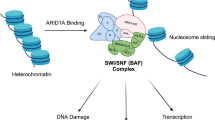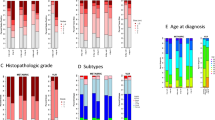Abstract
Estrogen has an important role in both the etiology and treatment of hormone-dependent endometrial cancers, although the mechanism remains elusive. To define the role of estrogen-mediated signaling we investigated the biological significance of estrogen receptors (ER) in NIH3T3 cell transformation via the [12Val] K-Ras mutant. This mutant enhanced the steady state level and transcriptional activity of ER. In addition, overexpression of both wild type K-Ras and ER transformed NIH3T3 cells. Co-expression of the progesterone receptor (PR) with mutant K-Ras led to suppression of tumorigenicity and inhibition of ER activation. The antisense oligomers complementary to ER suppressed proliferation and transformed phenotypes of K12V cells. These observations support the importance of ER in Ras-mediated cell transformation.
To address whether ER activation is also important in the development of human endometrial cancers, we investigated ER and PR expression levels in premalignant and malignant endometrial lesions. The results suggested the implication of ER abundance in endometrial hyperplasias, though modulation of PR expression by ER was retained. Gl adenocarcinoma also expressed higher levels of ER while PR modulation by ER was abrogated. These data implied the importance of ER activities in endometrial hyperplasia and Gl adenocarcinoma development.
Similar content being viewed by others
Abbreviations
- ER:
-
Estrogen receptor
- PR:
-
Progesterone receptor
- MAPK:
-
Mitogenactivated protein kinases
- E2:
-
17 β-Estradiol
- P:
-
Progesterone
- ERE:
-
Estrogen responsive element
References
Vojek AB, Hollenberg SM, Cooper JA: Mammalian ras interacts directly with serine/threonine kinase Raf.Cell 74:205–214, 1993.
Warne R Viciana R Downward J: Direct interaction of ras and the aminoterminal region of Raf-1 in vitro.Nature 364:352–355, 1993.
Zhang XF, Settleman J, Kyriakis JM,et al: Normal and oncogenic p21ras proteins bind to the amino-terminal regulatory domain of c-Raf-1.Nature 364:308–313, 1993.
Coezy E, Borgna JL, Rochefort H: Tamoxifen and metabolites in MCF-7 cells; Correlation between binding to estrogen receptor and inhibition of cell growth.Cancer Res 42:317–323, 1982.
Petrangeli E, Lubrano C, Ortolani F,et al: Estrogen receptors; New perspectives in breast cancer management.J Steroid Biochem Mol Biol 49:327–331, 1994.
Kato S, Endoh H, Masuhiro Y,et al: Activation of the estrogen receptor through phosphorylation by mitogen-activated protein kinase.Science 270:1491–1494, 1995.
Kato K, Ueoka Y, Kato K,et al: Contribution of enhanced transcriptional activation by ER to [12Val] K-Ras mediated NIH3T3 cell transformation.Oncogene 15:3037–3046, 1997.
Meyer M-E, Gronemeyer H, Turcotte B,et al: Steroid hormone receptors compete for factors that mediate their enhancer function.Cell 57:433–442, 1989.
Rose PG: Endometrial carcinoma.N Engl J Med 335:640–649, 1996.
Enomoto T, Inoue M, Perantoni AO,et al: K-ras activation in neoplasms of the human female reproductive tract.Cancer Res 50:6139–6145, 1990.
Enomoto T, Inoue M, Perantoni AO,et al: K-ras activation in premalignant and malignant epithelial lesion of the human uterus.Cancer Res 51:5308–5314, 1991.
Sasaki H, Nishii H, Takahashi H,et al: Mutation of the Ki-ras protooncogene in human endometrial hyperplasia and carcinoma.Cancer Res 53:1906–1910, 1993.
Caduff RF, Johnston CM, Frank TS: Mutation of the Ki-ras oncogene in carcinoma of the endometrium.Am J Pathol 146:182–188, 1995.
Nisolle M, Menten Y, C-Roux F,et al: Immunohisto-chemical analysis of estrogen and progesterone receptors in endometrium and peritoneal endometriosis; A new quantitative method.Fertil Steril 62:751–759, 1994.
Author information
Authors and Affiliations
About this article
Cite this article
Kato, K., Horiuchi, S., Terao, Y. et al. Relevance of ER to the development of endometrial hyperplasia and adenocarcinoma. Breast Cancer 6, 312–319 (1999). https://doi.org/10.1007/BF02966446
Issue Date:
DOI: https://doi.org/10.1007/BF02966446




